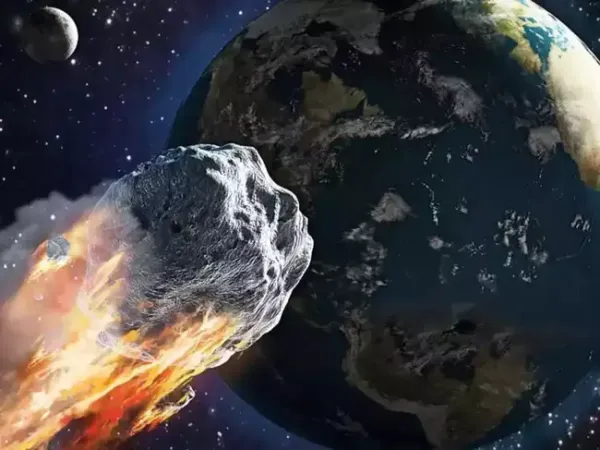In a development straight out of a science-fiction thriller, scientists have sounded the alarm on a massive asteroid named 2024 YR4, which could collide with Earth in 2032. Measuring as large as the Statue of Liberty, the asteroid has raised fears of a potential city-leveling impact. Initial predictions gave it a one-in-83 chance of hitting our planet, but those odds have now narrowed to a one-in-43 chance—roughly 2.3 percent.
NASA’s Center for Near Earth Object Studies (CNEOS) has wasted no time in making emergency preparations, calling in an international team of astronomers to study the asteroid using the James Webb Space Telescope. This move aims to accurately determine its dimensions and assess just how devastating an impact would be if it hits Earth.
“Nobody wants to accidentally disrupt an asteroid,” he explained. “It’s like turning a cannonball into a shotgun spray. You might end up creating multiple smaller projectiles, all still hurtling toward Earth.”
While kinetic impactors remain an option, the scientist didn’t rule out the possibility of using nuclear technology. “A nuclear warhead would provide a bigger punch, but it’s an awkward taboo we’d have to break,” he noted.
If deflection proves too risky or ineffective, Andrews floated a grim alternative: evacuation. “We might need to let it hit and evacuate the predicted impact zone. It’s not ideal, but it could save countless lives.”
With less than a decade before potential impact, the world’s eyes are now on NASA and its next move. As space agencies and scientists work to fine-tune their plans, humanity can only hope that 2024 YR4 becomes another close call in Earth’s long history of asteroid near-misses. Until then, the countdown to 2032 has officially begun.
NASA’s Center for Near Earth Object Studies (CNEOS) has wasted no time in making emergency preparations, calling in an international team of astronomers to study the asteroid using the James Webb Space Telescope. This move aims to accurately determine its dimensions and assess just how devastating an impact would be if it hits Earth.
Deflection or Disaster? The Risky Options on the Table
Dr. Robin George Andrews, author of How to Kill an Asteroid, is urging caution as humanity scrambles for a solution. Andrews highlighted the risks of using kinetic impact technology—similar to NASA’s Double Asteroid Redirection Test (DART) mission—to nudge the asteroid off its collision course. While the DART mission successfully redirected the 530-foot-wide asteroid moonlet Dimorphos in 2022, Andrews warned that similar methods may not be foolproof.“Nobody wants to accidentally disrupt an asteroid,” he explained. “It’s like turning a cannonball into a shotgun spray. You might end up creating multiple smaller projectiles, all still hurtling toward Earth.”
A Ticking Clock: Limited Time to Act
The asteroid’s next flyby in 2028 could be a crucial opportunity to attempt a deflection, but the risks remain high. Andrews emphasized the dangers of underestimating the asteroid’s size or miscalculating the force needed. “If it’s too big, one spacecraft won’t be enough. And even if we deflect it, we might only shift its trajectory to another part of the planet.”While kinetic impactors remain an option, the scientist didn’t rule out the possibility of using nuclear technology. “A nuclear warhead would provide a bigger punch, but it’s an awkward taboo we’d have to break,” he noted.
If deflection proves too risky or ineffective, Andrews floated a grim alternative: evacuation. “We might need to let it hit and evacuate the predicted impact zone. It’s not ideal, but it could save countless lives.”
The Countdown Begins
With less than a decade before potential impact, the world’s eyes are now on NASA and its next move. As space agencies and scientists work to fine-tune their plans, humanity can only hope that 2024 YR4 becomes another close call in Earth’s long history of asteroid near-misses. Until then, the countdown to 2032 has officially begun.







